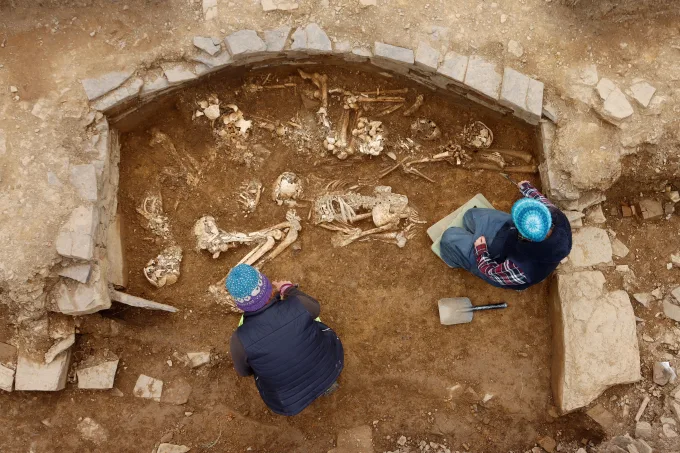The remnants of an “unimaginably uncommon” 5,000-year-old burial place have been uncovered on one of the Scottish Orkney Islands, Public Historical centers Scotland said in a proclamation on Tuesday.
The exhuming at Holm, East Central area, Orkney, uncovered a stone construction got to through a 7-meter (23-foot) – long entry and hints of a cairn – or heap of stones – that would take care of it, addressing the “zenith of Neolithic designing in northern England,” the assertion said.
Fourteen explained skeletons of everyone, as well as other human remaining parts, were found in one of the six more modest side cells that encompassed an enormous stone chamber.
“In the Neolithic, it would have been an unbelievably amazing 15 meter breadth, gigantic hill, exceptionally significant stonework, extremely great design. Those phones are genuine accomplishments of designing,” Hugo Anderson-Whymark, one of the removal’s co-chiefs and senior caretaker of ancient times (Neolithic) at Public Exhibition halls Scotland, told CNN.
Two of the skeletons had been situated so they were nearly embracing against one another, with two youngsters set over their heads, Anderson-Whymark said. Be that as it may, archeologists have not yet resolved the connections between these people.
“The safeguarding of so many human remaining parts in a single piece of the landmark is astonishing, particularly since the stone has been generally looted for building material,” paleologist Vicki Cummings, top of the School of History, Prehistoric studies and Religion at Cardiff College, who co-coordinated the removal, said in an explanation.
Just 12 other comparative burial chambers are known to exist in Orkney, alluded to as Maes Howe-type section graves. The vast majority of these stay apparent in the scene – not at all like this most recent disclosure which was covered subterranean.
It was to a great extent obliterated in the late eighteenth or mid nineteenth 100 years to give stone to building a farmhouse, as per the assertion, yet later simple unearthings in 1896 revealed eight skeletons and provoked neighborhood collector James Walls Cursiter to conjecture that it was a destroyed burial chamber.
Papers held in a confidential assortment of Curister’s notes contained more hints that permitted archeologists to embrace a geophysical review in the expectation of pinpointing the likely burial chamber, and give the premise to the removal.
“It was very much a shock to make that disclosure,” Anderson-Whymark said. ” It’s something major yet today it’s simply a delicately moving field of grass. There’s nothing on a superficial level to propose this burial chamber at any point existed there however it would have once been a unimaginable landmark. We’re lucky they’ve left us barely enough of it.”

